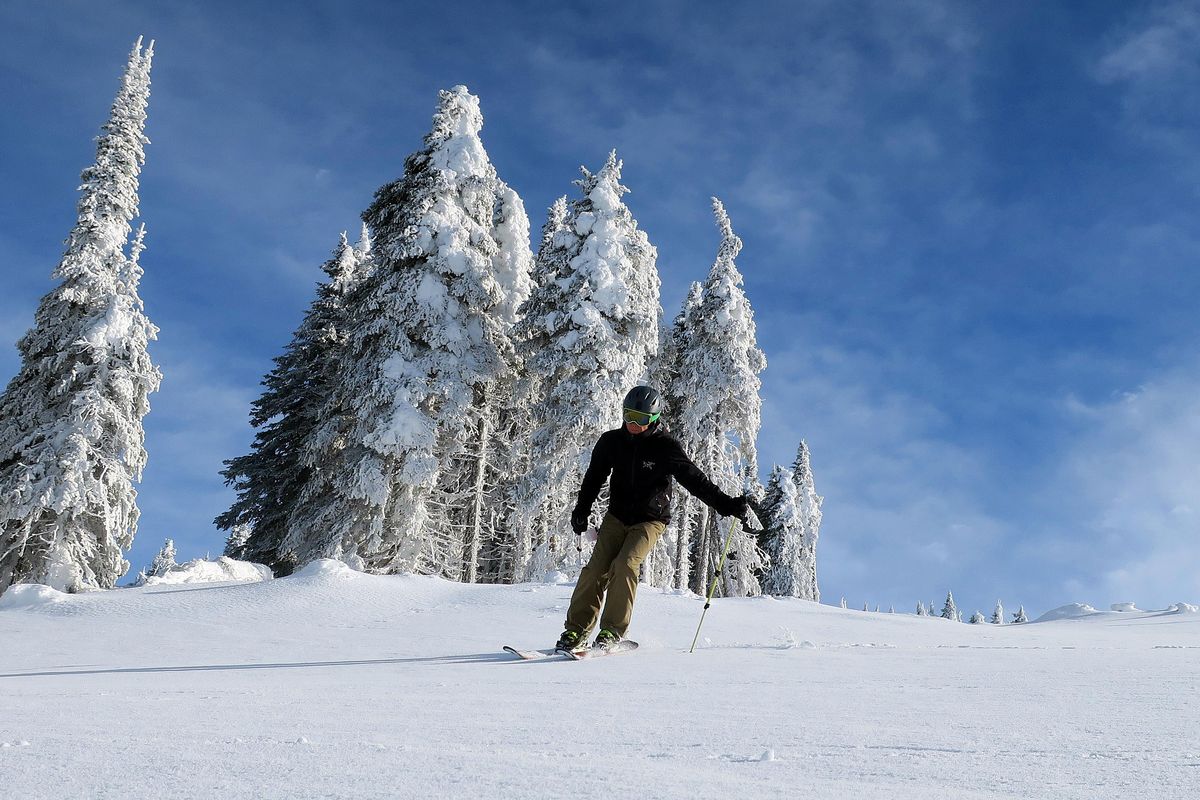Mount Spokane expansion transitioning from fantasy to reality

Let’s wave a magic ski pole and travel into the future.
It’s 2019 and we’re skiing Chair 6 at Mt. Spokane and Snowboard Park. The new $2.5 million triple chair is the talk of the town, opening up 279 acres of scenic intermediate terrain on the resort’s northwest-facing side.
Seven new runs fall down this side of the mountain, and skiers and boarders can’t get enough of the 1,500-vertical-foot drop. The runs seem to go on forever, tracking nearly a mile from the summit, and the sustained pitch is fast and fun.
Almost overnight, the new terrain has helped Spokane’s hometown ski area feel much more grown up.
And, snap – we’re back to 2018 – where it’s a different story. Today, skiers and snowboarders at Mt. Spokane can only catch a glimpse of what is to come.
Five of the seven runs were quickly cut this fall after the protracted legal battle blocking the chairlift was resolved in August last year. Logging debris litters the slopes, and Mt. Spokane has roped off the runs, but you can ski them as long as you know how to get out at the base of the new chairlift. The easiest way is to ski an access road north that delivers skiers to the base of Chair 4.
For years, much of the terrain was the winter playground of out-of-bounds skiers who picked their way through the trees in search of powder. The dense forest was difficult to navigate at times, requiring sometimes-hazardous stream crossings lower on the mountain.
Now, the cut runs have transformed the experience into something that’s much tamer, but still wild and scenic.
“I’m kind of torn,” said Mike Burns, a member of the Mt. Spokane Ski Patrol who has skied the terrain for years. “That was kind of our secret playground. There was epic skiing back there.”
But Burns thinks the new chairlift will be a major advance for the resort and the general skiing population.
“It’s going to be great,” he said. “That’s the side of the mountain that gets the better snow. And those are the longest runs we’re going to have here.”
Brad McQuarrie, Mt. Spokane’s general manager, said the new lift will be a game-changer for the resort.
“People are going to love it,” McQuarrie said. “The skiing experience will be so much better.”
The new runs have consistent intermediate fall-lines, he said, and will feel quite a bit different from the front side of the mountain, which has several cat tracks to help navigate the terrain. Chair 6’s terrain won’t necessitate any intrusive cat tracks, McQuarrie said.
Originally, Mt. Spokane had hoped Chair 6 would be a 1960s-era double chair that the resort purchased and removed from Bridger Bowl near Bozeman in 2013. But McQuarrie and the board of the non-profit ski area have now opted to use the old Bridger Riblet lift for parts replacement on existing lifts at Mt. Spokane.
Instead, McQuarrie said, Mt. Spokane is accepting bids on a new 4,874-foot triple chair to serve the new terrain. He expects the project to cost $2.5 million.
“It will produce quite a bit more capacity, which is something we need,” he said.
Beyond the skiing and snowboarding, McQuarrie said the resort is considering adding a gathering place at the base of the new lift. Chair 6’s loading area will have almost 50 acres of space to play with, McQuarrie said.
“I’d love to have a fire pit or a gazebo back there,” he said.
The Chair 6 unloading area will drop riders near the top of Chair 1, where visitors will be able to make the short climb to the historic Vista House on the mountain’s 5,883-foot summit.
As most Spokane residents know, the approval process has been a long time coming.
In early 2000s, proponents had wanted to build two chairlifts and add about 800 acres on the west side of the park for skiing, but were opposed by several groups. A long review process ensued, one that led to many public meetings and environmental studies, said Cris Currie, president of the Friends of Mt. Spokane State Park, a non-profit group that promotes volunteer involvement in the park.
In 2013, a scaled-down proposal for a single chairlift was proposed and eventually ended up in a contentious court battle. The Lands Council, Spokane Audubon and Spokane Mountaineers were among the groups opposed. Eventually, the battle reached the Washington Supreme Court, and was allowed to go through last year.
Currie, author of “Mount Spokane State Park: A User Guide” ($14.95, Gray Dog Press) was personally opposed to developing the west side of the mountain, but feels the review process was fair.
“In any fight like this, somebody’s got to lose and somebody’s got to win,” he said. “In the end, I think it was a fair compromise.” Currie is writing a book about the history of skiing at Mount Spokane and will cover the expansion battle in detail.
On a recent Saturday I ducked the ropes and skied the new terrain. If you decide to follow my lead, be aware that the resort doesn’t recommend going out of bounds in this area because of the logging debris. And be sure you know how to access the road out to Chair 4.
From a skier’s perspective, I’m impressed.
The pitch is a classic blue run that is much longer than any other trail at the ski area. As I skied down what will be the Chair 6 lift line, I kept thinking I would hit the bottom but the run just kept going.
As afternoon sun drenched much of the run, it was all the more enticing, prompting thoughts about a promising future for alpine riders – and the resort.
John Nelson is a freelance writer based in Seattle. Read his blog at SkiZer.org.